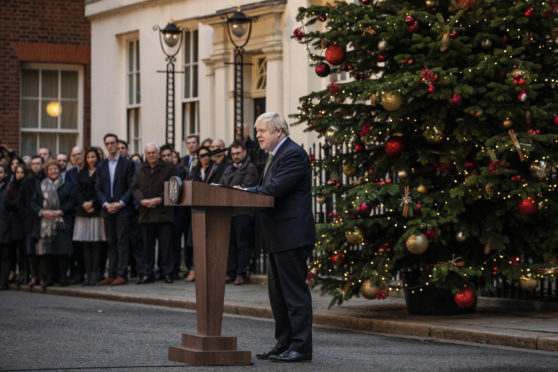
When the exit poll came, it came with a bang.
A Tory majority that keeps Boris Johnson in Number 10 with a promise “to get Brexit done” and, in Scotland, an SNP landslide predicated on a pledge to kick the Prime Minister out of power and keep Scotland in the EU.
And while, when the actual votes came in, the predictions fell short of the exit poll’s highs, it was clear that England supports the Tories and Scotland votes SNP.
Results, rooted in apparently contradictory political positions across these isles, but that only hint at the contrary political times we face.
But in a mendacious election where people were voting for many different things, some not even hinted at on the ballot paper, what is clear is that the Scots went to the polls and helped deliver a United Kingdom that now looks like a country of two halves.
And buoyed by her victory – winning 47 seats (48 if you include a win for suspended Kirkaldy SNP candidate Neale Hanvey) out of a possible 59 – and with the Scottish Tories losing seven, going down to six, Sturgeon addressed the PM directly when she said: “It is the right of the people of Scotland [to hold a second independence referendum] and you, as the leader of a defeated party in Scotland, have no right to stand in the way.”
But Johnson will stand in her way. He has already said he will not grant the section 30 order required for the Scottish Parliament to hold a legal second independence referendum. And by character, he is not going to be the PM that wants to take us out of the EU but breaks up GB.
For now, Sturgeon is going canny with the rhetoric. She knows that not everyone that voted SNP on Thursday wants independence, although potentially prepared to buy into the idea that they have the right to choose.
Since 2014, support for independence has not wavered, it still hovers around the half way mark – too close to call.
So, while Sturgeon’s claim that the election has further strengthened her mandate for a second independence referendum is clearly credible, she remains cautious on why Scots have lent her that support.
Whatever it was or was not, this election has been a clear endorsement of her. And one that, for not entirely obvious reasons, she needed.
Despite Sturgeon’s ratings in the polls, her own future has been under attack. Whether it was about her caution, the pending Alex Salmond trial, or just out of sheer boredom with an SNP Government that had been around for some time, commentators had been questioning when, rather than if, she would leave. And on the eve of the poll, and despite repeated assurances that she was going nowhere, an influential pro-independence blogger called for her to stand down.
This result cements her position and with the prospect of five more years of Tory rule and being dragged out of Europe against our will, it does appear to increase the likelihood, if not the inevitability, of independence.
With the power over a referendum still sitting with a bullish Boris Johnson at Westminster, Sturgeon will be hoping that given time, Scots find that an increasingly hard fact to swallow.

Enjoy the convenience of having The Sunday Post delivered as a digital ePaper straight to your smartphone, tablet or computer.
Subscribe for only £5.49 a month and enjoy all the benefits of the printed paper as a digital replica.
Subscribe